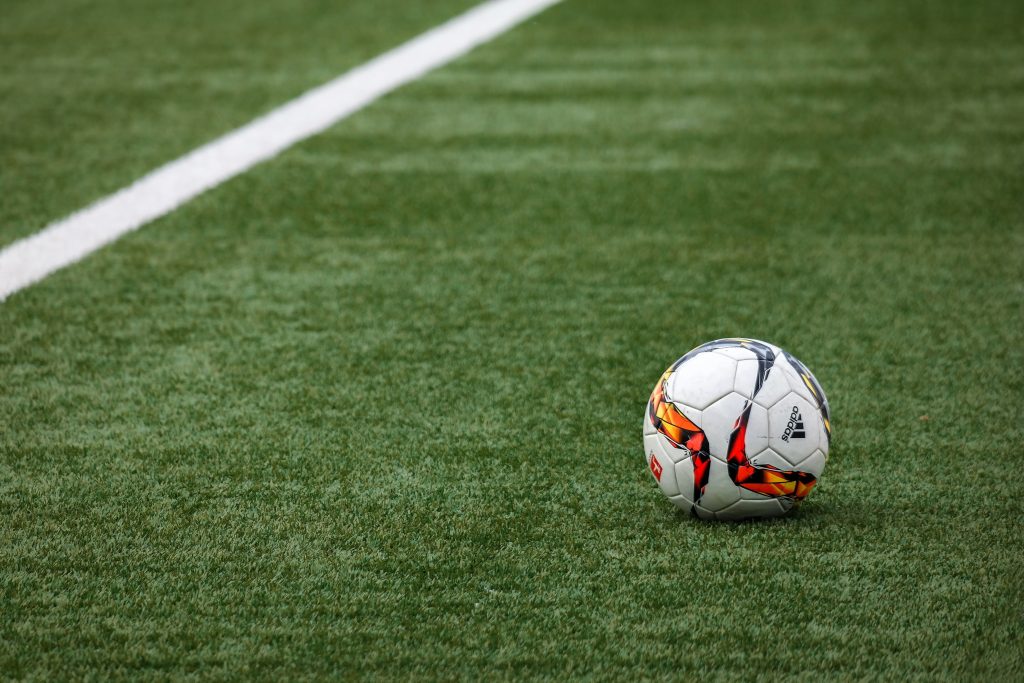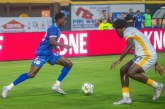An unprecedented winter tourney in a highly controversial locale
This year marks the golden birthday of the quadrennial competition that crowns the champion of international soccer, as the 2022 edition of the FIFA World Cup – set to kick off in Qatar on Nov. 20 – will be the 22nd iteration of the tournament. Unfortunately, though, when it comes to the circumstances of how the host nation was bestowed that honor and the manner in which it installed its shiny new infrastructure over the course of the last decade, not all that glitters is gold.
The news of which countries had been named hosts of the 2018 and 2022 World Cups was announced jointly by soccer’s governing body in December 2010. At the time, very little was made of the decision to hand the first of those hosting duties to Russia, and once that tournament actually began, most Western journalists reported glowingly about outrageously fast Wi-Fi speeds, pristine sports arenas, sparkling city centers and efficient mass-transit systems. The annexation of Crimea that had occurred four years prior was worrying but seemed like it might have been just a blip on the radar. Only now, in hindsight, does the glossy modern sheen that Vladimir Putin wanted to present to the world then appear to have been an elaborate public-relations campaign to camouflage his burgeoning autocratic intentions.
No, what elicited worldwide shock – and swift condemnation when the widespread corruption that led to the outcome was exposed – on that late-autumn day at FIFA headquarters in Zurich was then-president Sepp Blatter’s declaration that, in just a few short years, a tiny desert Gulf state with a nonexistent soccer tradition would be welcoming upwards of 1.2 million fans from across the globe to yet-to-be-constructed venues to watch the showcase event of the world’s most popular sport. The premise alone was absurd without taking into account the entire scope of the arrangement, but several details of the plan would require corrective action to be taken for it to even come to fruition.
Typically, the World Cup is held in what are summer months for the Northern Hemisphere so as to not interfere with the schedules of the world’s most prestigious professional leagues, the vast majority of which are based in Europe and have seasons that generally stretch from August to May. The best players in the world tend to be concentrated in these leagues, so inclusion in their respective national sides to participate in each tourney is virtually guaranteed regardless of which country a player represents. However, because the average summer high in Qatar is 106 degrees – with temperatures frequently soaring above 120 degrees – holding the World Cup in such an inhospitable environment necessitated a break in tradition.
FIFA acknowledged in 2015 that it would be moving the 2022 tournament to later in the calendar year, inciting anger among its affiliated confederations and long-term infighting between member institutions upset at the disruption to their established routines. Eventually, UEFA, which oversees the European leagues, resolved to starting play earlier and ending it later to accommodate the month-long break in the middle of this season. Still, doing so has created fixture congestion that has threatened player health and led to an uptick in injuries – including several to star players who were set to feature in Qatar. And while delaying the tournament was the right thing to do in order to preserve the safety of its most prized assets, the organization’s attitude regarding human-rights issues at large is abysmal, a sad distinction that it shares with the host nation.
FIFA essentially has looked the other way as an estimated 6,500 workers have perished in Qatar since the country won the rights to the 2022 World Cup. Although the association isn’t directly responsible for those lost lives, it is complicit in granting the tournament to a federation whose pitch included building entire cities in oppressive heat to support the influx of tourists, teams, media and the like that would be descending on the peninsula in fairly short order. FIFA must have known, too, that the harsh labor system Qatar inherited from British colonial rule would mean that the 2 million migrants that comprise 95 percent of the country’s workforce would be responsible for creating said infrastructure. At best, it was naïve in believing that those workers’ interests would be protected.
Qatar’s tremendous national wealth and impressive GDP per capita, both borne of its vast oil reserves, are beset by stringent restrictions imposed upon its populace. The Islamic state’s legislation is principally informed by sharia law and is correspondingly patriarchal. Women must obtain permission from male guardians to marry, travel or study abroad, as well as to perform a variety of other actions. Homosexuality is outlawed, as is sex outside of marriage in general. A one-night stand is punishable by up to a seven-year prison sentence, which applies to citizens and visitors alike. Alcohol is prohibited in public and allowed only in certain licensed establishments. Temporary amendments to this last rule will be in place for the duration of the World Cup, but the Qatari government has steadfastly maintained that open drunkenness will not be tolerated.
While many notable figures within the sport, hopeful that common ground uniting supporters of all stripes regardless of their personal differences and political viewpoints can be found, are serving as ambassadors for this tournament, others – such as former Manchester United standout Eric Cantona and England’s Beth Mead, Golden Boot winner and player of the tournament at this summer’s European Championship – have been outspoken in their criticism of the location for this year’s competition. Citing labor abuse, stifled freedom of expression and a lack of accountability on the part of both FIFA and Qatar, many human-rights groups, watchdog organizations and outside influencers also have called for a boycott of the tourney.
The international soccer community has experienced a variety of negative emotions, ranging from bemused incredulity to furious disapproval to resigned acceptance, since Blatter dropped a proverbial bomb on it 12 years ago. Given the intense controversy surrounding the 2022 World Cup, the humanitarian crisis it triggered and the ethical dilemma facing fans debating whether or not to support their countrymen, will it all be worth it to tune in a couple weeks from now? While the response to that question will vary depending on the individual, from a purely sporting perspective, the answer is yes, absolutely.
Without diminishing the very real troubles plaguing the 2022 tournament, it does promise to entertain, likely exhilaratingly so. The passion the beautiful game evokes in its fans is unrivaled in sports, and the level of athleticism that will be on display is even rarer. In advance of the U.S. serving as a co-host and thus earning automatic qualification for the 2026 tourney, long-suffering American supporters will get their first taste of World Cup action in eight years. Regular viewers of Premier League, Bundesliga, La Liga and Serie A matches will be used to the early morning and afternoon kickoff times. Also, the European domination of the last two decades finally could come to an end thanks to a wide-open field that includes dangerous dark-horse African sides, a stacked Brazilian squad and an Argentinian team inspired by the diminutive giant Leo Messi playing in his last international competition.
What follows is a breakdown of all 32 teams, which two out of every group of four should advance to the knockout stage and a rundown of all the best, most exciting players that will be vying to distract viewers’ attentions from the more depressing aspects of the 2022 World Cup in Qatar with their superb skillsets:
Group A: Ecuador, Netherlands, Qatar, Senegal
While the host nation should receive a sizable boost from playing in familiar conditions in front of home supporters and Ecuador proved its mettle by surviving brutal CONMEBOL qualifying, the clear frontrunners here are Senegal and the Netherlands, with the reigning Africa Cup of Nations champions and European qualifying group winners, respectively, both boasting electrifying squads that like to play at a brisk pace.
Senegal features a stout central defense (Kalidou Koulibaly, Abdou Diallo) in front of rangy Chelsea netminder Edouard Mendy, and the midfield encompasses a wealth of top-flight experience. Expect much of the attacking play of the Lions of Teranga to go through Sadio Mané, as the speedy forward is one of the world’s best. His nation’s ambitions will rest, though, on an injury he suffered in a game on Nov. 8; its severity might mean the difference between advancement and elimination.
Holland features a dynamic attack, as well, with lightning-fast wingbacks making overlapping runs on the outside of a midfield set marshalled by Frenkie de Jong. The emergence of Cody Gakpo as a viable forward option alongside Memphis Depay and Steven Bergwijn should make for exciting viewing, as should the defensive partnership between captain Virgil van Dijk and Matthijs de Ligt. While the former has experienced a shaky start to the league season, the latter looks sharper than ever after making a move to Germany’s best club side, Bayern, from Italian giants Juventus.
Though FIFA’s ranking system is seriously flawed, Qatar does sit in a respectable position at No. 50 in the world, largely thanks to a top-notch development program implemented 18 years ago at a cumulative cost of a billion dollars. Although the goal is simply to make a decent showing, don’t be surprised if the upstart squad hangs close in all three of its group-stage matches. The same should be expected of Ecuador, which comprises a solid mix of youth and experience.
Group B: England, Iran, United States, Wales
This tasty group features a pair of geopolitical foes facing off with Iran and the U.S., as well as a longstanding U.K. rivalry match between England and Wales. Then there’s the whole Revolutionary War angle between the Yanks and the Brits. It’s enough to make even the most casual of soccer fans salivate at all the permutations and possibilities for advancement.
The good news for the U.S. is that this might be the best collection of players the country has ever assembled. Since the last World Cup cycle, several American players have broken through at the highest levels of the game and have represented such historically esteemed clubs as Barcelona, AC Milan, Celtic, Chelsea and Juventus. Quite a few ply their trade in the English Premier League, widely regarded as the best in the world, with a pair (Brenden Aaronsen, Tyler Adams) striving to keep Leeds United afloat in the top tier after the team barely escaped relegation last season.
The bad news is that a) the bulk of the talent is concentrated in the attacking midfield area rather than being evenly distributed across all the lines, b) the team has looked rusty as of late in tuneups against subpar competition and c) the injury bug has put some key members in jeopardy of missing the tournament. Although Juve standout Weston McKennie has returned to partial training, his strained quad may not be at 100 percent by the time the tournament gets underway. Nagging muscle injuries have limited Gio Reyna, Adams, Josh Sargent and Matt Turner, too, in recent weeks and months, but they should be good to go. Miles Robinson, Chris Richards and now perhaps Zack Steffen aren’t so fortunate.
Although there remain questions at center back and at striker, the Yanks have options at the number 10 slot, with Christian Pulisic aka Captain America, frustrated at a lack of playing time for his club in his desired role, poised to prove his doubters and detractors wrong by doing all he can to push the U.S. into the next round. I think he and the team will do just enough to get them over that line.
After narrowly losing to Croatia after extra time in a semifinal at the last World Cup and in penalties to Italy in the final of Euro 2020 (delayed until last summer due to COVID), England has cratered in recent months. They lacked form and seemingly conceded goals for fun while crashing out of the top tier of the Nations League. Central defender Harry Maguire has been the poster child for the demise, looking completely out of sorts for his club side and losing both his starting spot and the captain’s armband in the process. And what once was a position of strength (wingback) now is a weakness due to injury; Ben Chilwell is out, Reece James is doubtful and Kyle Walker is a question mark. There is a wealth of talented players at manager Gareth Southgate’s disposal, however, and more than enough firepower in attack to propel this team into the knockout stage of the tournament. They should get there unless the same conservative tactics that have limited their potential in past tournaments stymie Harry Kane’s prolificacy up front.
While Gareth Bale reserves his best play for his national side, the Welshman is past his prime, and his team lacks the kind of depth and overall quality needed to advance out of a tough group and into the round of 16. The same could be said of Iran – although it really would not be a total shock to see any two of these four squads make it out alive.
Group C: Argentina, Mexico, Poland, Saudi Arabia
Second only to Brazil in qualifying, Argentina should be a lock to win this group, and it would be a monumental failure if it were not to advance at all. Mexico looked shaky in CONCACAF qualifying, losing away to the U.S. in Cincinnati and to Canada in Edmonton, but those cold-weather games weren’t conducive to the team’s style of play, which won’t be an issue in the desert of Qatar. Like with Bale and Wales, this Robert Lewandowski-led Polish team probably isn’t deep enough to threaten those two at the top, though it can keep things interesting if Wojciech Szczesny is a beast between the sticks and Arkadiusz Milik continues the fine goal-scoring form he’s kept for Marseille. No disrespect to the Saudis, but their path to the World Cup was less difficult than most, and they struggled when they went up against stiffer competition. It would be fairly surprising were they to slide past any of these other three teams.
Group D: Australia, Denmark, France, Tunisia
The Socceroos barely eked out a place in the tournament, doing so in workmanlike but boring fashion, and the Aussies’ roster is devoid of household names. They work hard for each other on the pitch, but this is too tough of a group for them to do any damage. Although it includes some exciting young players, like on-loan Manchester United prospect Hannibal Mejbri, Tunisia, too, likely won’t be able to cause much of a stir in a group that also includes the defending champions and a plucky Danish squad that some would say overachieved at last year’s Euros.
France should advance with little to no trouble, but the current lineup is a shell of the one that cruised to victory in Russia. The forward line, featuring Karim Benzema, Kylian Mbappe and a host of complementary options, is world class, and the defensive unit should be solid enough – particularly at center back – to compensate for the missing pieces in the middle of the field. Both Paul Pogba and N’Golo Kante will miss out due to injury, and Aurelien Tchouameni and Eduardo Camavinga are able replacements if called upon, but the rest of the crop is aging and/or slow. The midfield line might prove to be a hindrance further down the line, as could team unity; however, if coach Didier Deschamps can corral the rampant egos of his stars and focus their energies on a singular purpose, this French squad could be the first to repeat as champs since Brazil did it in 1958 and ‘62.
Denmark returns many of the same players who featured last summer to the 26-man squad that will compete in Qatar. A handful of youngsters were added to the mix this go-round, which should inject energy and nicely balance the experience of players like Simon Kjaer, Thomas Delaney, Pierre-Emile Hojbjerg and Kasper Schmeichel. Christian Eriksen has fully recovered from the horrific on-field cardiac arrest he suffered in Denmark’s first Euro contest against Finland last year and will look to replicate the good form he’s produced for Man U as a free transfer to start this season.
Group E: Costa Rica, Germany, Japan, Spain
The clear favorites here are Germany and Spain, though Japan plays incredibly well together and could pose a threat to both. Costa Rica were a surprise qualifier from CONCACAF and might be without its top-choice goalkeeper, PSG backup Keylor Navas, which could further dent its already slim chance to advance.
This will be the last World Cup for elder statesmen like Manuel Neuer, Thomas Muller and Marco Reus, but this is a transitional German team loaded with many promising yet unproven younger players in addition to some underachieving stars who should be hungry to recapture the spotlight. It will be a struggle for this version of Germany to make it beyond the quarterfinal stage, but it should at least get to that point.
Spain outplayed eventual champion Italy at the Euros and was unlucky not to have made it to the final. Had it done so, it very possibly would have defeated an uber-careful English side. Whether it can recapture the same form that saw it draw kudos from pundits across the continent last year is anyone’s guess, but La Furia Roja is as likely as any to compete for the ultimate prize in Qatar. It will need to tally more goals than it has in recent tournaments to truly be a factor, but contributions from what is a superb midfield unit could alleviate some of the concerns surrounding the production coming from up front.
Group F: Belgium, Canada, Croatia, Morocco
One of the more intriguing and hard-to-predict groups is this one, which, similar to Group B, could see any combination of teams making it to the next round of matches. This will be the last stand for Belgium’s golden generation of players, who at the very least will look to avoid another disappointing early exit from a prestigious tournament. At their best, though, they could push the other favorites for the title. Led by the ageless sensation Luka Modric distributing precision through balls and scoring wonder strikes from distance, Croatia is another challenger for the FIFA World Cup Trophy. Stunning most observers by advancing all the way to the final four years ago, it will be interesting to see if this aging group has enough in the tank to put together one last magic run.
Canada avoided disaster with offensive-minded fullback Alphonso Davies escaping serious injury on a knock he suffered in a recent Bundesliga match. Expected to be fully fit for the tourney, the team leader will hope to build attacks from the back en route to making it out of the group stage in only the country’s second World Cup appearance and its first since 1986. Morocco, seen by some as a dark-horse title candidate, also has the potential to create waves by making it out of the group stage. Its dazzling pair of high-energy wingbacks, Achraf Hakimi and Noussair Mazraoui, will look to press high and often, alternating between sending in crosses on the overlap and cutting inside to pump shots in on goal.
Group G: Brazil, Cameroon, Serbia, Switzerland
While Brazil is the class of the group and will look to secure its first trophy in 20 years, any of the three other teams have the potential to advance to the round of 16. Just don’t expect any of them to knock off the Selecao in the process. Brazil is so packed with talent at virtually every position, here’s a list of players who didn’t make the squad: Roberto Firmino, Emerson Royal, Philippe Coutinho, Gabriel Magalhaes, Renan Lodi, Matheus Cunha, Luiz Henrique and Gerson. All are considered top players for their respective clubs and couldn’t even make the national team as substitutes, such is the quality of the ones who were picked for Qatar. The attack will be devastating regardless of who Tite chooses to play, but his options include Neymar Jr, Vinicius Jr, Rodrygo, Raphinha, Gabriel Jesus, Richarlison, Gabriel Martinelli and Antony. It’s an embarrassment of riches, and progression to anything less than a semifinal would be a disappointment.
As far as the other three teams are concerned, take your pick. Serbia’s excellent attacking duo, Aleksander Mitrovic and Dusan Vlalhovic, are battling minor injuries but are a lethal scoring force when healthy. Switzerland is sneakily good and stunned the French in last year’s Euros, but it looks like it will be without the hero of that match, keeper Yann Sommer, due to – yep, you guessed it – injury. A resurgent Andre-Franck Zambo Anguissa is pacing Napoli in Serie A and the Champions League in a way he was unable in the Premier League, and Eric Maxim Choupo-Moting has rediscovered his scoring touch at a crucial time for Bayern. If both can produce the same quality of play for Cameroon as they have for their club sides, the Indomitable Lions will a great opportunity to roar past the competition.
Group H: Ghana, Portugal, South Korea, Uruguay
Portugal and Uruguay will be the favorites to advance out of this group based on the potency of their mercurial strikers. Although he’s been a controversial figure within the Man U dressing room and has offered diminishing returns on the pitch, Cristiano Ronaldo has long been a force for his country. Diogo Jota’s scoring presence will be missed, but Rafael Leao ought to be able to pick up some of the slack. Misused at Atletico Madrid, Joao Felix will be chomping at the bit to prove himself. And the roster sheet reads like a who’s who of top athletes at every position. Oddsmakers have been cool on Portugal, but I wouldn’t recommend sleeping on their chances of making some noise.
Uruguay’s squad is somewhat similarly arranged. Luis Suarez and Edinson Cavani are long in the tooth, but both are crafty veterans. Liverpool’s Darwin Nunez is fiery and inconsistent, but he also can provide moments of brilliance in attacking situations. Federico Valverde has established himself as one of the best transitional midfielders in the world, and there are several viable options at center back and in defensive midfield. Ronald Araujo will be sorely missed if ruled out, but this squad is deep enough to absorb the impact of his absence and talented enough to progress to at least a quarterfinal.
Son Heung-min is THE face of football in South Korea; sadly, fractures to that punim required surgery that likely imperils the Tottenham star’s hopes of appearing in this World Cup. Without his link-up play and lethal finishing, I don’t see how the Asian nation advances. Frankly, it would be a difficult challenge even if he were fully fit. Conversely, the Black Stars of Ghana are low-key dangerous as underrated underdogs. Composed of scrappy yet technically sound squad players culled mostly from lower-table sides used to perennial relegation fights and spirited derbies, they promise to present a test to any team they face.








